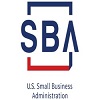Principle of Quality Assurance of a Drug Set by FDA (FDA validation)
01/28/2020
Category: Other Blogs
Food and Drug Administration (FDA) is responsible for monitoring, analyzing, and testing pharmaceutical human and animal drug production and ensure that the products are made following the desired quality parameters they are designed for. It is important to note that the results obtained by FDA validation should be verified by subsequent inspection and experiments before inspection of the manufacturing process in process validation. This entire mechanism is called FDA validation or process validation. FDA establishment registration is done in sterilization operations like steam, dry-heat, ETO, radiation, filtration, aseptic fill. It is also applied for manufacturing operations like lyophilization, molding soldering, machining, blending, water purification systems. Environmental control systems comprising of clean rooms and laminar flow units are also applied under process validation. Its function is to collect and analyze the reports starting from the product design phase to the final output.
FDA covers human drugs, veterinary drugs, biotechnology products, and active pharmaceutical ingredients. But this FDA Validation does not put light on the computer hardware and software interfaces that are required for the proper functioning of equipment. Dietary products, medicated articles Type A, medical devices, and transplanted human tissues do not fall under process validation. Efficient management and good documentation are two main parameters of the product life cycle, which will fuel the production process more effectively. It is also important to provide training of the specialists and experts who belong to the main confidence of the validation procedure. They should be tested in terms of their skills and technological knowledge.
Also Read: FDA Warning Letters – Initiative Taken by FDA for Violating the Quality Standards
FDA motivates advanced conceptual development of pharmaceutical manufacturing and quality risk management. The entire procedure can be explained through the following steps:
- Blueprint juncture: An elaborate strategy is prepared like the Work Breakdown Structure of project management. Proper scientific studies are done on those products and processes that can give continuous and stable commercial benefits in manufacturing. The conclusions and proper explanations should be recorded for further evaluation in the product life cycle. FDA monitors both the equipment functioning and sampling of raw materials. It gives a concept of the variability of the assured quality and to what extent it can be controlled as well as reduced.
- Process Qualification: In this stage, the planned strategies are assessed and understood to make sure a consistent and smooth manufacturing process can be implemented. After completion of this stage, batch production starts. Under a project, the entire stage is divided into several plans that will individually focus on performance evaluation as well as risk management. Each plan of action should cover aspects like physical tests to be performed, addressed quality parameters, duration of the critical activity, duties of several departments, procedures of documentation, and also essential conditions of the requirement of changes. PPQ (process performance qualification) merges the usefulness of machines with trained specialists. It is an important landmark in the product lifecycle as commercial manufacturing can only start after completion of this process. The manufacturer should understand the product and process and measures to control quality. He should be confident enough on his team and equipment to provide error-free material throughout life.
- Continued process verification: This stage signifies that processes and products are at a stage of controlled quality. In this way, the customer is supplied with the best quality of drugs. There is a vigilant team that reports to the FDA team whenever there occurs an anomaly. There is a perpetual team that collects and analyses the product and process data following the quality. It should include all the details of incoming raw material, the process involved, and the finished product. With the help of statistical tools, this information is analyzed to measure the trend. This data also gives a clear idea of improvement and optimization. There should be continuous monitoring and sampling of the desired parameters until sufficient data is available to check the variability estimates. The reports prepared are subjected to analysis by experts through which the later production stage starts, and the defects or drawbacks that were found in the previous batch are avoided. Moreover, it always maintains a pace in continues quality improvement from the manufacturer’s side and quality assurance to the customer’s side.
tagging: FDA validation


